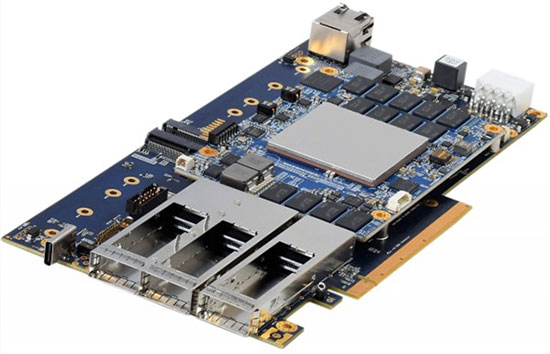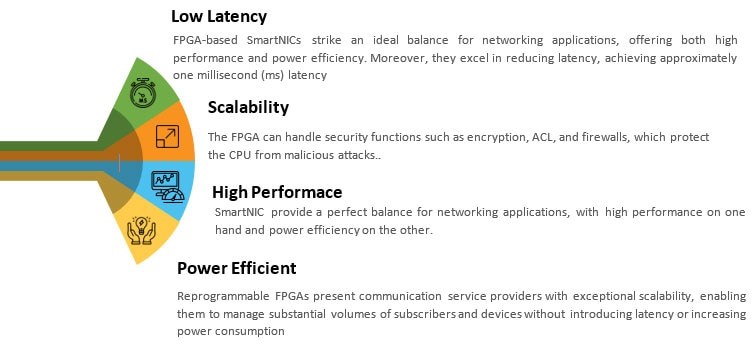SmartNIC Storage & Network Accelerator Card for Servers
The surge in data poses a significant challenge for data centers, emphasizing the need to offload tasks from the host server's CPU. The need for devices capable of accelerating demanding workloads to prevent overload and enhance data and signal processing capabilities remains paramount.
In order to improve connectivity and communication between a computer and a network, smartNIC cards play a key role in bolstering the computer's networking and processing capabilities. Comprising an array of interconnected and adaptable components, these cards govern the processing and routing of data as it traverses through the data center.The SmartNIC Storage & Network Accelerator Card, meticulously engineered by iWave, is designed to offer high-speed networking expansion. It features dual front panel QSFP DD Cages with flexible options for 200GbE or 100Gbe Ethernet, in addition to providing high-performance storage extension with support for triple NVMe slots.
 The iWave SmartNIC Storage Accelerator Card Zynq Ultrascale+. (Image source: iWave)
The iWave SmartNIC Storage Accelerator Card Zynq Ultrascale+. (Image source: iWave)
The key components of the Network Interface Card encompass:
High-speed networking: The SmartNIC card boasts a dual front panel QSFP-DD cage, supporting both 200GbE and 100GbE, as well as a single front panel QSFP-DD cage catering to 40GbE and 10GbE. These configurations ensure robust high-performance I/O connectivity with lossless Ethernet support.
High-throughput Storage: Equipped with an onboard 8 GB 72-bit DDR4 RAM complete with error correction code for the processing system and an additional 16 GB 128-bit RAM dedicated to programmable logic, the SmartNIC card delivers exceptional storage capabilities. Furthermore, it accommodates two M.2 NVMe slots on the SmartNIC Carrier board, facilitating expanded storage options.
Advanced ARM and FPGA Integration: Powering the SmartNIC card is the formidable ZU19/ZU17/ZU11 Zynq UltraScale+ MPSoC System on Module, boasting a remarkable 1143K programmable logic cells. At its core, it hosts a Quad-core ARM Cortex A53 CPU running at 1.5 GHz, a Dual Cortex R5 Real-Time processor operating at 600 MHz, and an ARM Mali 400MP2 Graphical Processing Unit, delivering an adaptable platform with exceptional performance.
Seamless Connectivity: To ensure effortless connections, the SmartNIC card incorporates a 3/4 Length PCIe Gen3 x16 Host Interface on its board, establishing a resilient link between the SmartNIC and the computer or server.
 (Image source: iWave)
(Image source: iWave)
Benefits of Utilizing an FPGA-based Network Interface Card
- Reprogrammable FPGAs present communication service providers with exceptional scalability, enabling them to manage substantial volumes of subscribers and devices without introducing latency or increasing power consumption.
- Within the SmartNIC landscape, the synergy between ARM and FPGA computational resources leads to a substantial improvement in energy-efficient performance.
- FPGA-based SmartNICs strike an ideal balance for networking applications, offering both high performance and power efficiency. Moreover, they excel in reducing latency, achieving approximately one millisecond (ms) latency.
- Furthermore, FPGAs can assume the role of managing security functions such as encryption, ACLs, and firewalls, safeguarding the CPU from potential malicious attacks.


Have questions or comments? Continue the conversation on TechForum, DigiKey's online community and technical resource.
Visit TechForum








